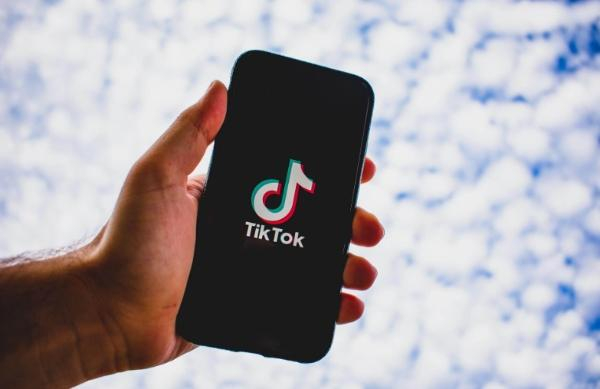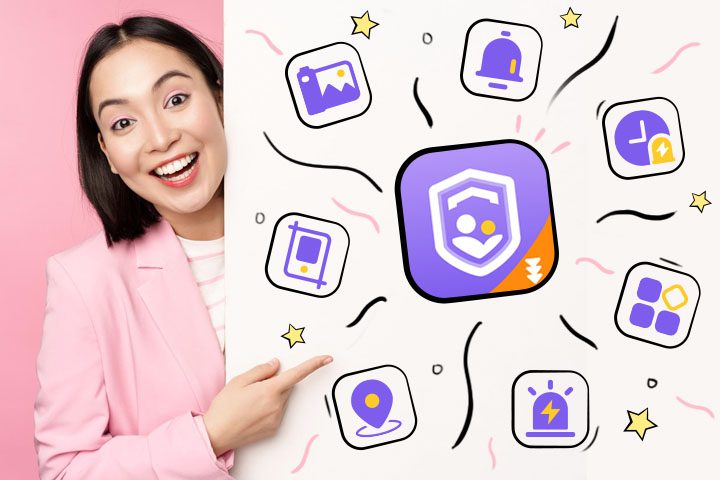Today, let’s learn how to keep the 10 bad things about TikTok away from our kids.
TikTok, the brand on everyone’s tongue, is a short-form video app that has left the world in awe, gazing at the continuous procession of funny skits and many viral trends.
However, beneath the shiny melodies and flashy effects. There are 10 bad things about TikTok that every parent has to keep in mind when handing a phone to their child.
In this article, we venture into the darker consequences of TikTok, examining the potential risks it carries and giving guidance to parents on how to manage this digital environment. Then, let’s learn the 10 bad things about TikTok first.
10 bad things about TikTok analysis
In today’s era of developed Internet, everyone should have used or heard of TikTok. We also know that it has advantages and disadvantages. Today let us understand its disadvantages: 10 bad things about TikTok.



The addictive nature of TikTok
The most unsettling feature of TikTok is its extremely addictive nature. It may trigger longer-than-usual screen time and risky consequences.
The scrolling feature makes videos seamless and easy to binge through, making it very easy to get lost in the endless consumption of video content.
The powerful algorithm also considers user preferences and personalizes the content for each user. So all of the videos they serve are both relevant to viewers’ interests and highly engaging.
The app’s addicting design and individualized recommendations make it easy to get carried away for hours, leading to unwanted and high screen time.
Consequently, the platform’s effect, varying from compromised productivity to social alienation and a sedentary lifestyle, among others, can be exacerbated.
Privacy concerns
TikTok’s fun and lighthearted content can mask a more serious concern which is user privacy.
It gathers a huge variety of information on its users, including their locations, actions in the app, and personal details, like phone numbers.
While TikTok emphasizes that data is used to customize content for your TikTok experience, extravagant data collection could potentially breach people’s privacy.
On the one hand, the large amounts of user data also attract hackers’ malicious attention. Such information can be used for identity theft, scamming, or blackmail.
Spread of misinformation
While TikTok provides a platform for the creation of original entertainment content, it has also become an environment for the spread of misinformation.
For instance, during the COVID-19 epidemic, unsubstantiated medical data was widely shared on TikTok, which could have exposed people to incorrect information.
Here’s how misinformation flourishes on TikTok:
1. Topics are presented through several short videos, which can lead to the loss of meaning or factual context.
2. Users are exposed to data that can only confirm what they already believe, and the veracity of the facts mentioned is not checked.
3. The rapid and viral nature of sharing on the platform makes it extremely easy for fake news to spread.
Misinformation on TikTok can profoundly impact individual users and society, including the community.
Prolonged use of untrue information diminishes the trust of sources like Doctors and Journalists, while misinformation about illnesses. For example, it can give people harmful health information.
In addition, people become less attentive and more likely to believe any news they may see on the Internet or elsewhere.
Impact on mental health
While teenage fun themes and dance challenges might be innocent. TikTok is a space with excessive information that can affect mental health, particularly for the younger ones.
The streams of manicured content, as well as the urge to keep up with the unrealistic portrayals of life. It can lead to certain mental health problems.
Here’s how TikTok can negatively affect mental health:
- The constant exposure to unattainable standards of beauty can cause body image dissatisfaction, low self-esteem, and even social anxiety.
- Users might feel the need to conform to the existing trends, which may lead to anxiety and stress, and one would feel that he/she is not doing enough on the platform.
- If the user shows interest in a topic, the algorithm might provide an endless stream of information, increasing the user’s anxiety and creating a cycle of negativity.
Cyberbullying and harassment
Despite TikTok’s community rules that ban bullying and harassment, the platform’s massive user base has created a place where such behaviors can be easily tolerated.
On TikTok, a single statement can trigger an avalanche of negative comments and mockery, leading to mass bullying of a person.
The capacity to set up fake accounts also makes it easy for bullies to impersonate someone else or create fake profiles to attack their targets.
Excessive cyberbullying on TikTok can be so crushing psychologically, leading to victims experiencing emotions of anxiety, depression, and social isolation.
Inappropriate content exposure



Among the huge concerns about TikTok is the possibility that users, especially children, may be exposed to unsuitable content.
Here are some of the content that a young audience may come across on TikTok:
- Some content creators cross the line by introducing explicit photos and videos of a sexual nature.
- In certain cases, issues like violence, drug use, and even self-harm can find their way onto the platform.
- Kids might not grasp pranks that involve damaged property, dangerous stunts, or even bullying as a funny skit.
When young minds that are still developing are exposed to mature topics, it can become confusing or even frightening to them.
Teenagers are more likely to bow to peer pressure and decide to take part in inappropriate challenges or deal with suggestive content just to be accepted and get some social recognition.
Intellectual property concerns
Copyright infringement, the unauthorized use of any other’s creative work, is a prevalent issue across the platform. Here’s how it plays out in TikTok:
- Placing videos of existing famous songs or sound effects in them without gaining permission is a violation of copyright.
- Videos that directly copy or even somewhat reference the ideas, characters, events, and storylines of copyright-protected creations such as movies, TV shows, or video games can be a tricky situation.
- Some challenges might involve reproducing scenes or using copyrighted material from movies or music videos, which could be considered a violation of copyright.
The consequences can be considerable for content producers that infringe intellectual property since copyright owners often ask TikTok to remove these infringing contents.
Multiple copyright infringements will lead to suspension or even termination of the accounts, and in the worst case, copyright owners may file legal action against the infringing artists.
Algorithmic bias
While smart algorithms help personalize things and keep us glued to screens, biases can also creep in and affect what we see and experience on apps like TikTok.
Here’s how algorithmic bias manifests on TikTok:
– When a user watches a lot of videos that endorse one point of view, the algorithm prioritizes the same kind of content and shows that user information that supports their beliefs.
– If the algorithm learns that the favored beauty standards suit only a certain race or body type, it may magnify content that fits those ideals, and creators who do not conform to this pattern might be marginalized.
– The algorithm can restrict user access to content from small creators or those who do not fit their usual preferences, making it difficult for new voices to get noticed.
These effects can be profound, as users may be trapped in echo chambers while missing out on the vibrancy of the diverse views and information they would otherwise have.
Algorithmic bias can also prevent artists from disadvantaged groups or those with unpopular ideas from reaching the general public.
Negative impact on productivity
TikTok is the king of procrastination. Its numerous short clips, which are very interesting and engaging, have made scrolling through TikTok easy and a time-consuming hobby.
Here’s how TikTok can negatively impact productivity:
– The autoplay feature may easily lure you into losing precious time and attention.
– The incessant stream of notifications disrupts your work, drawing you into the apps again.
– The quickness of TikTok can make you feel like you have to always watch the app to keep up with the moving trends.
These factors themselves cause a loss of productivity that could be quite substantial.
In this regard, how can you use TikTok on a regular basis without procrastinating? Here are some tips:
- Take advantage of the screen time management options on your phone or download some third-party apps. These can help you reduce the amount of TikTok you use every day.
- Mute those tempting alerts so you can’t be distracted while working or studying.
- Instead of TikTok, you should prefer activities that keep your mind fresh but do not hinder your attention.
Platform Abuse for Scams and Phishing
While TikTok offers a vibrant space for entertainment and creativity, it also harbors a sinister side: a hotbed of fraud and phishing.
Here’s how scammers manage to trick users in the app:
- Scammers take advantage of TikTok’s familiarity and trust, ultimately faking accounts that appear to be authentic and resemble other users.
- Fraudsters may target well-known celebrities, offering collaborations just to lure viewers into believing the scam is genuine.
- Scammers create fake giveaways by promising expensive prizes or exclusive VIP access only in exchange for your personal information or suspicious clicks.
- Scammers try to get passwords and credit card details using phishing attacks.
For users to protect themselves from scams and phishing attacks on TikTok, they can:
1. Watch out for unrealistic offers. If something seems too good to be true, it probably is the case.
2. Before you decide to engage in any account promoting a product or service, make sure to research it independently.
3. Never Share Personal Information. If an account asks for such information, inform the support team immediately.
So, why is TikTok bad for kids? The app can be so addictive that it easily consumes their time and attention, making them unable to study or do chores.
Apart from the time wastage, their consistency on the app exposes them to inappropriate content, ranging from suggestive dance routines to false reports.
Along with cyberbullying and privacy issues. There is still intellectual copyright infringement and algorithm bias that prevent their comprehension of the world.
This may shatter their self-esteem and mental health and cause them harm, making it necessary for parents to set rules and talk openly about online security.
After learning the 10 bad things about TikTok, parents should be aware that keeping TikTok away from your kids’ Phone with FlashGet Kids is imminent.
Spot and keep TikTok away from your kids’ Phone with FlashGet Kids
With applications like TikTok, which can be addictive and easily unsuitable for children. Parents require sustainable tools to guarantee the safety of their children on the Internet.



With FlashGet Kids, you can manage your child’s mobile experience proactively and constructively, shaping their digital life in a healthy way.
Here’s how FlashGet Kids equips you to keep your kids safe from bad apps like TikTok:
- App blocker: FlashGet Kids’ App Blocker has been designed as the gatekeeper of digital apps. It allows you to restrict specific apps, including TikTok.
- Activity monitor: The FlashGet Kid Activity Monitor is not just an app blocker. It also provides valuable information about your child’s phone activities.
- Schedule screen time: Through FlashGet Kids’ Screen Time Scheduling feature you can take control of building healthy barriers, define and regulate the time for the phone and only allow access during particular time slot.
- Screen mirroring: It helps you see what happens in real-time on your kid’s phone without you being around her. You can see the kind of websites she loves to visit or apps she loves using.
Overall, these FlashGet Kids features can help keep your kids away from 10 bad things About TikTok.
FAQs
Can TikTok usage be managed to mitigate negative impacts?
Yes, it is possible to manage TikTok usage to avoid its negative consequences. Some suggestions and solutions to avoid unsafe use include setting screen time limits and making sure kids take breaks from the app, using parents’ controls and restricted mode as well as joining them in activities that do not require screen use.
How can users protect their privacy on TikTok?
Here are some practical steps users can take to protect their privacy on TikTok:
1. Check and amend your privacy settings so you can decide who sees your posts and personal data.
2. Do not give away sensitive details or identification information like your phone number, home address, or school.
3. Turn off location services and other data-sharing permissions if they are not needed.
4. Report any activity that seems suspicious or worrying to TikTok’s security team.
What is the bad content on TikTok?
TikTok’s bad content incorporates harmful, inappropriate, and misleading content, which may harm teenagers and children users. This includes:
1. Disinformation campaigns and conspiracy theories are shared on viral videos.
2. Explicit, pornographic content that is not meant for children.
3. Harmful problems or situations which motivate people to take risks or do something illegal.
4. Websites with content that portrays or promotes violence, self-harm, and eating disorders.
Final words
In the digital era, it has become crucial to ensure the safety of kids online. While TikTok is all about entertainment, it also has many risks.
From addictive scrolling and fake news to online bullying and unattainable beauty standards, the 10 bad things about TikTok have potential mental health side effects on young people.
To create a safe and responsible online zone for your child, seek the aid of apps like FlashGet Kids. Let’s keep the 10 bad things about TikTok away from kids.

